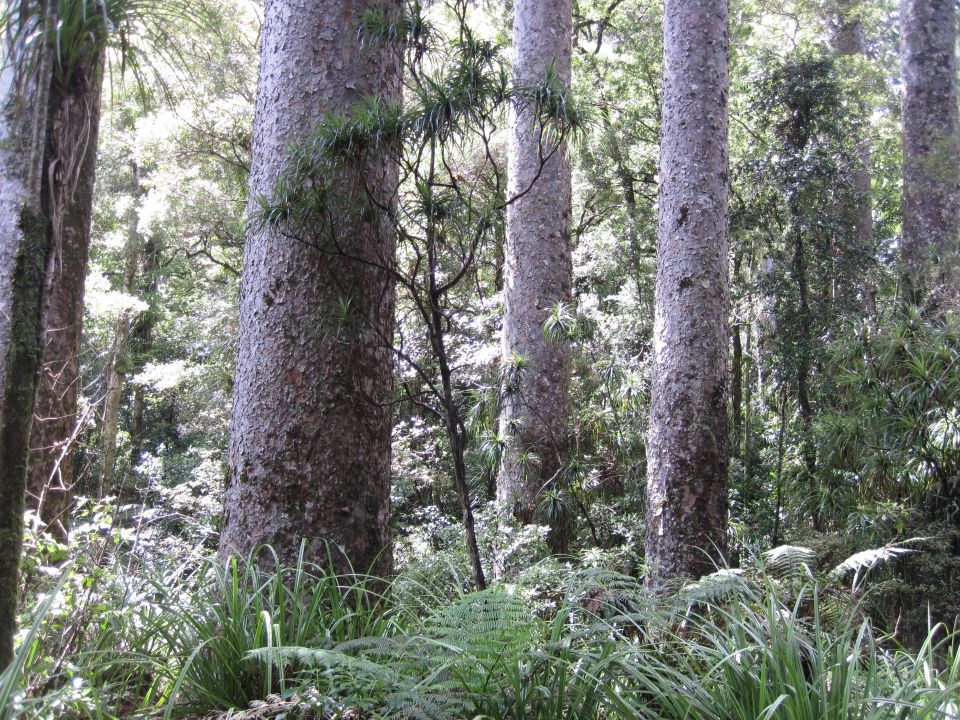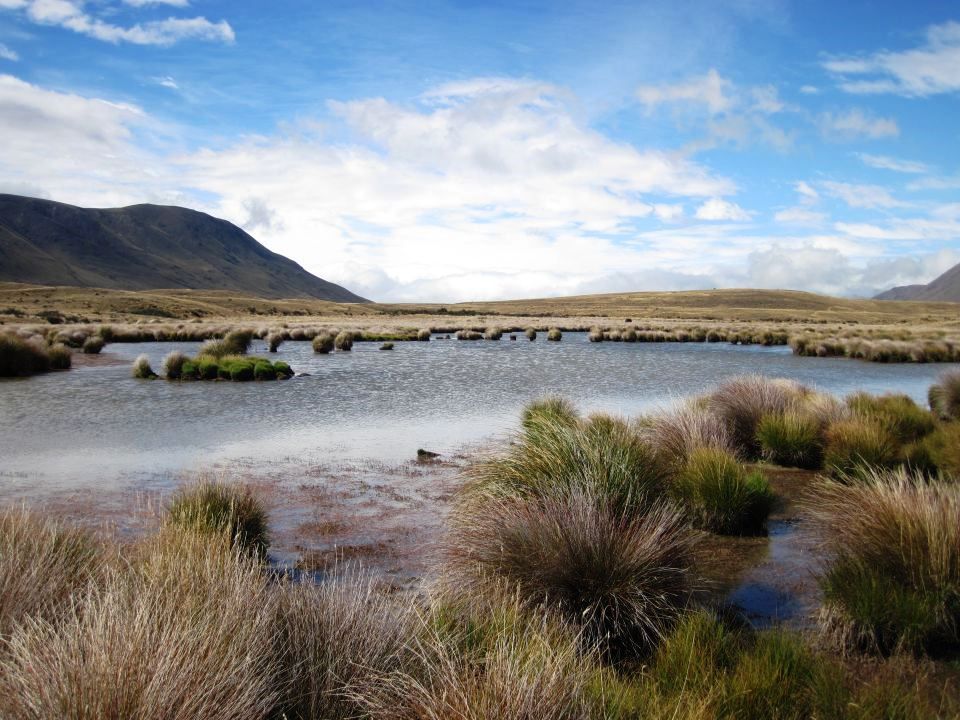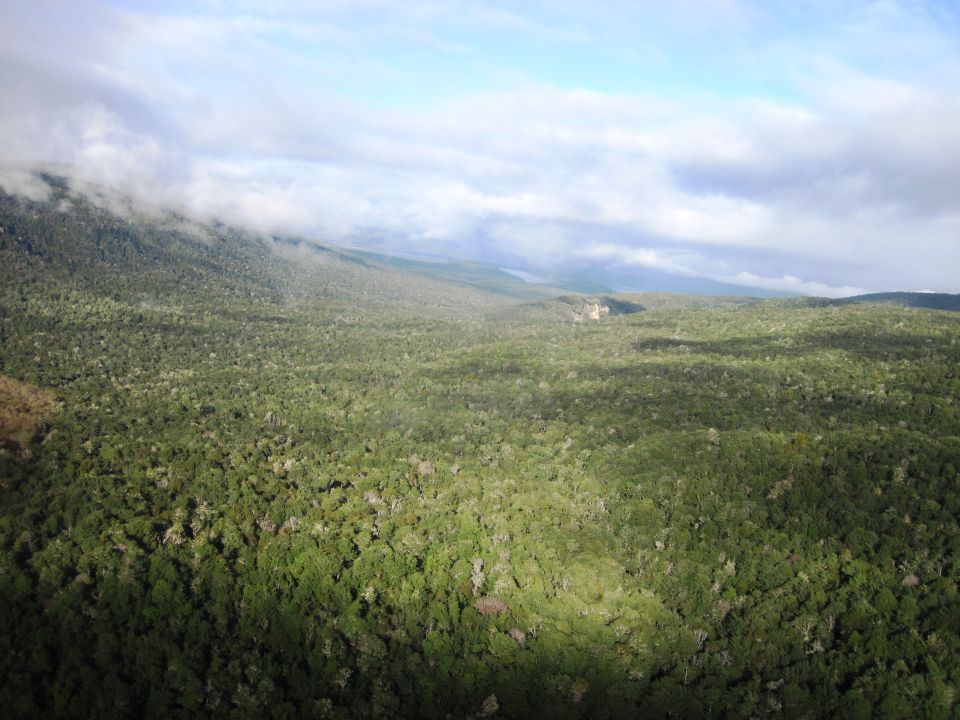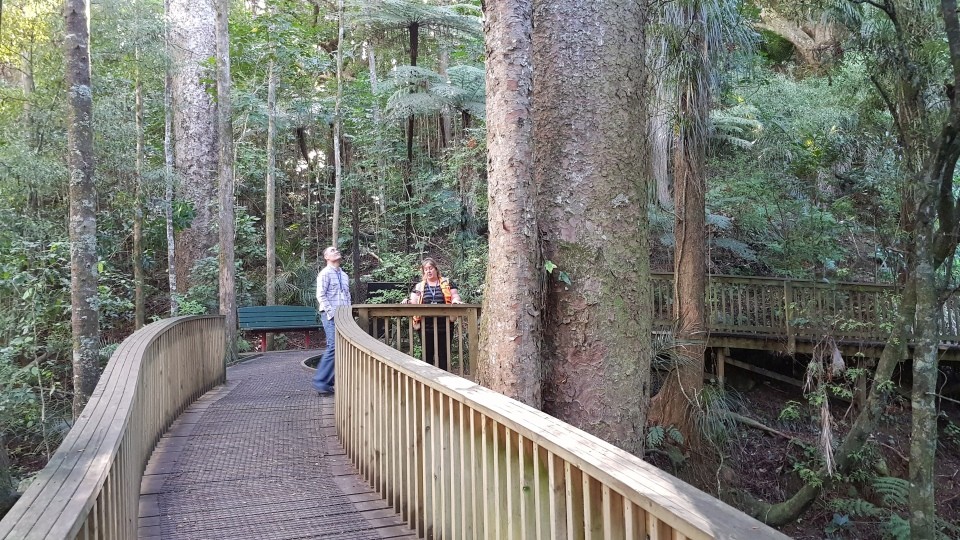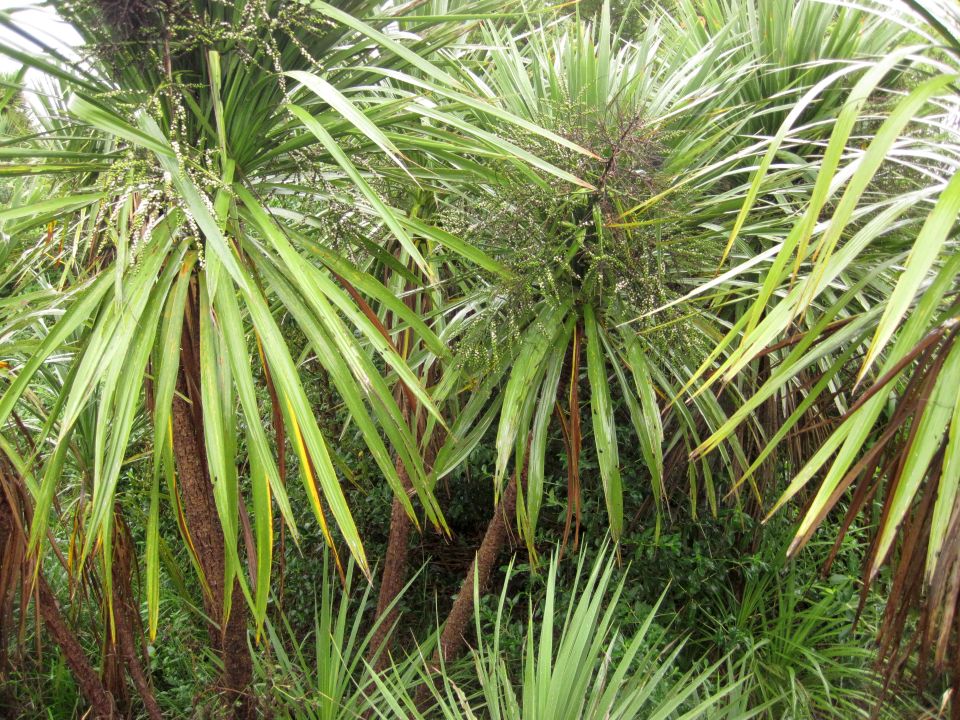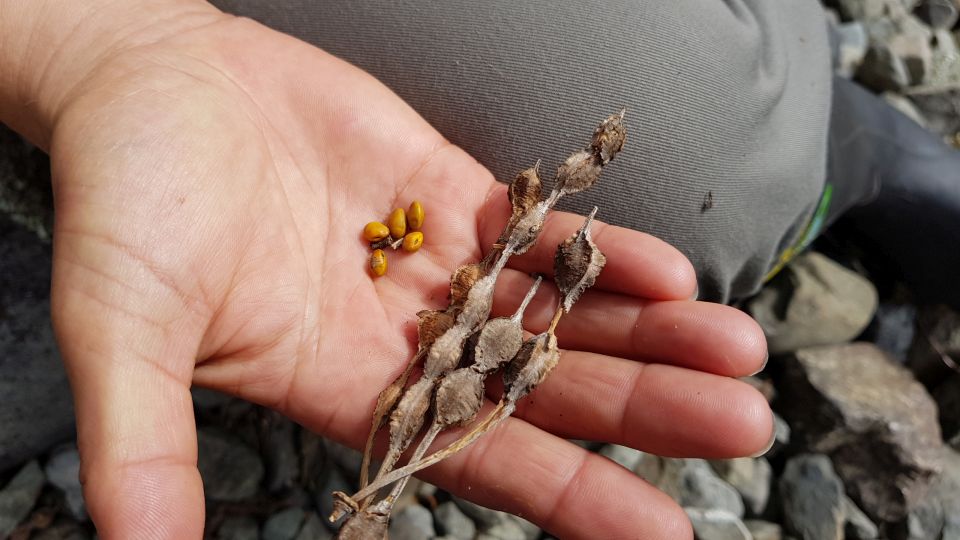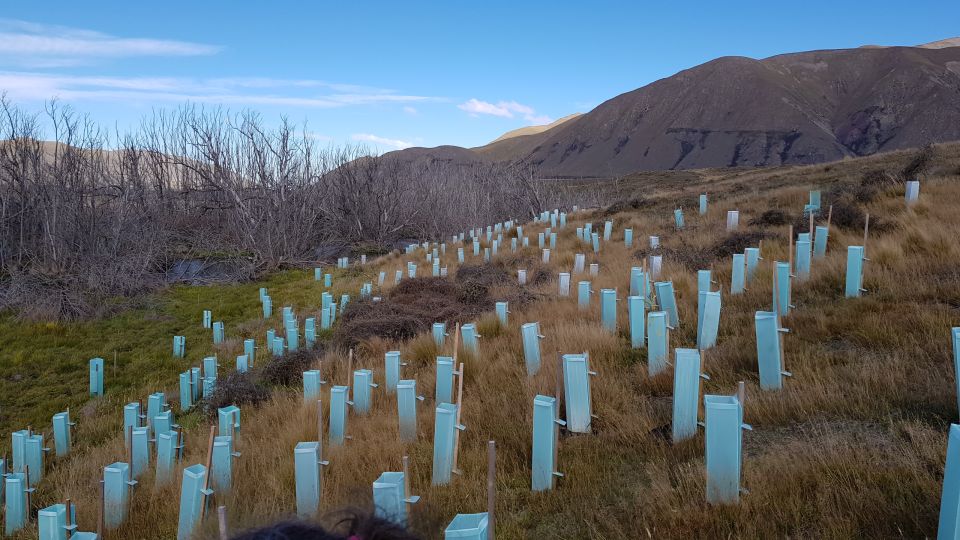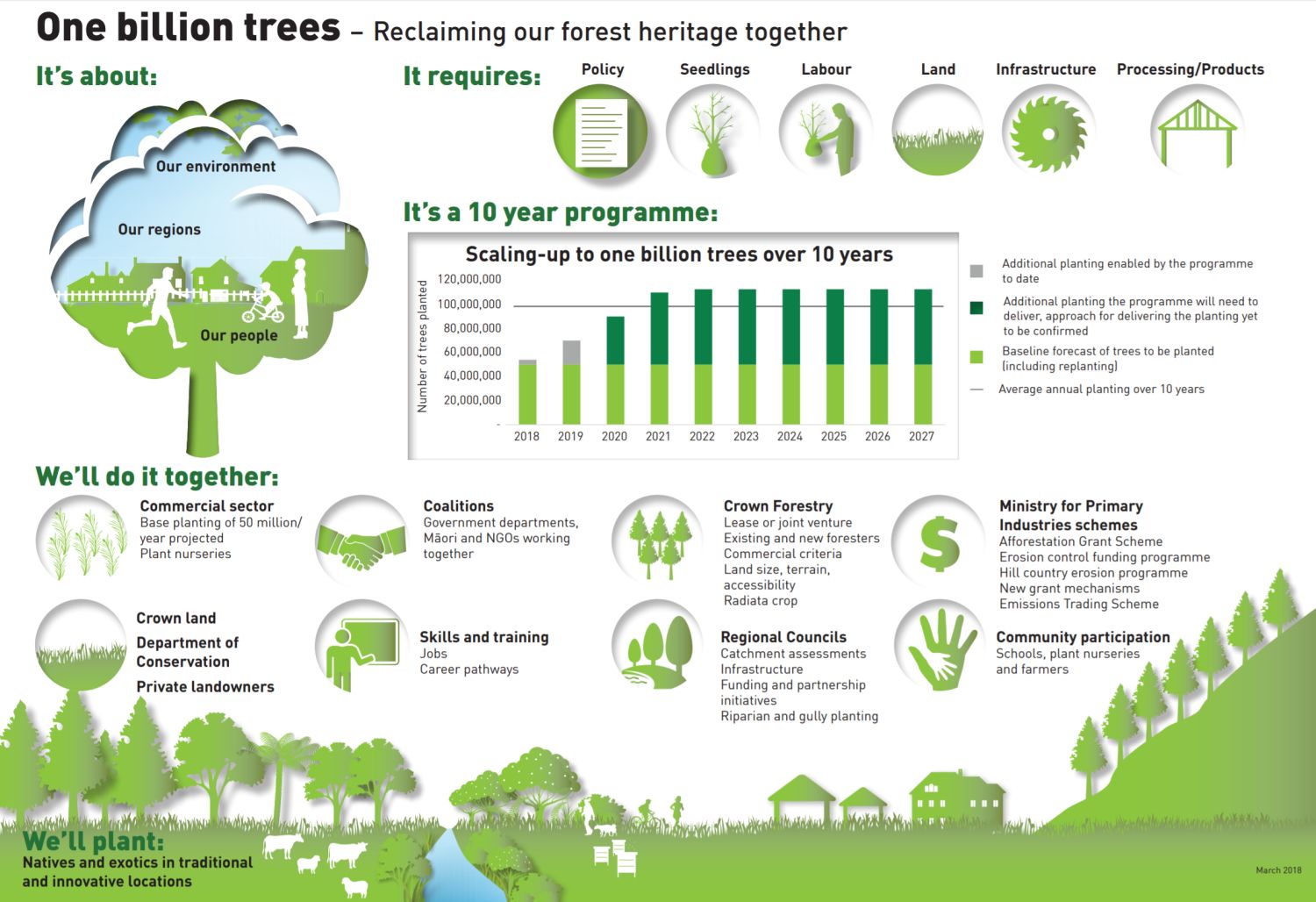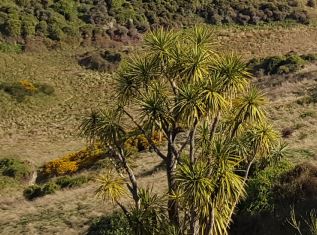Unique and varied
Like our special animals, New Zealand’s native flora has evolved in isolation over millions of years. 80% of our trees, ferns and flowering plants are endemic, which means they are only found in New Zealand.
There are many different areas where plants grow in New Zealand. That means there are many different types of plants. For example:
- kauri and kohekohe forests
- rainforest dominated by rimu, beech, tawa, mataī and rātā
- dunelands with their spinifex and pīngao
- alpine and subalpine herb fields
- wetlands
- ferns and flax
- scrub and tussock.
Find out more about New Zealand’s native plants and plant habitats.
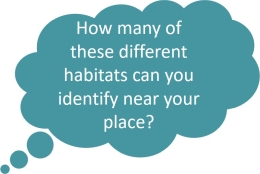
Importance of plants
Plants are vital to our lives and the natural systems that sustain us.
- Plants protect the soil from erosion and reduce flooding.
- Forests cycle water between the soil and atmosphere and help make rain.
- Trees produce oxygen for us to breathe.
- Plants provide food for native birds.
- Trees absorb carbon dioxide so are valuable "carbon sinks" to help counter climate change.
Places where our native flora grows are also places we like to visit. They are popular places for tourists so are important for our economy. Plants also provide habitat for a wide variety of animals.
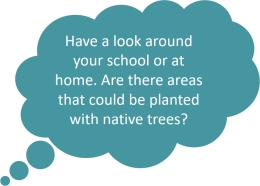
Pioneering plant species
Some native plant varieties are called 'pioneer species'. Examples are mānuka, kānuka and tī kōuka/cabbage trees. They like starting out on bare ground and are hardy. These easy-to-grow plants will generally tolerate extremes in temperature, terrain, soil type and drainage.
In restoration, planting even a few pioneer species can encourage birds to bring in the seed of a wider variety of plants, saving you the time and expense of growing them yourself. And pioneer species are better adapted to the open sites where restoration planting is often done.
Ecosourcing seeds
Ideally, bush areas will regenerate naturally from falling seeds, or those carried in by wind or birds. But sometimes nature may need a helping hand through active restoration planting and seeding. This is especially so if the restoration is being done on land that was previously farmed. Collecting seeds close to where they are to be planted is called ecosourcing. It is an important part of a restoration project.
Why is ecosourcing important?
Ecosourced plants will be suited to local conditions and more likely to survive. They will also help maintain the area's unique local characteristics. Ecosourcing will avoid the risk of planting species which are not native to the local area and which could become invasive.
More about ecosourcing, plus ideas for native plant restoration:
- More about ecosourcing
- Tips for restoration planting
- Starting a community nursery
- Local planting guides
- Attract birds to your garden
Trees That Count – Te Rahi o Tāne
Trees That Count is a project to get New Zealanders planting millions of native trees. The project aims to keep a live count of the number of native trees being planted across the country. But it’s also about planting trees that count. These are trees needed for climate change, biodiversity, and restoring our environment. A great reason to start a restoration project!
Why keep count?
Counting the trees means we can see all the great work that thousands of Kiwis do each year. It also helps measure the effect we could have on climate change.
More information on the carbon cycle, climate change, and carbon sequestration:
- http://www.learnz.org.nz/redvale181/bg-standard-f/organic-waste-and-land...
- https://www.sciencelearn.org.nz/resources/1569-carbon-cycle
- https://www.treesthatcount.co.nz/media/17393/ttc-carbon-sequestration.pdf
Get involved
We can all play a part in the Trees That Count project. Visit the Trees that Count website for more information.
The resources section has information on where to get trees, planting guides, getting started, and monitoring your planting project.
Planting one billion trees
The Government has set a goal to plant one billion trees over 10 years (between 2018 and 2027). This will take a combined effort by government, landowners, commercial foresters, conservation groups, regional councils, iwi, communities, and others.
The planting of both permanent trees and forests that can be harvested in the future will be encouraged. That will mean using a mix of exotic and native tree species on private, public, and Māori-owned land.
One Billion Trees is another way to get involved in ecological restoration. Find out more about the programme using the links below:
- More about 1 Billion Trees - The why, how and what of 1 billion trees from MPI (Ministry for Primary Industries).
- Tracking progress of the One Billion Trees programme - See how progress in going with the programme. Also find out about other tree planting programmes.
- Become a tree planter – Information on how to help with the goal of planting 1 billion trees on the DOC website.

